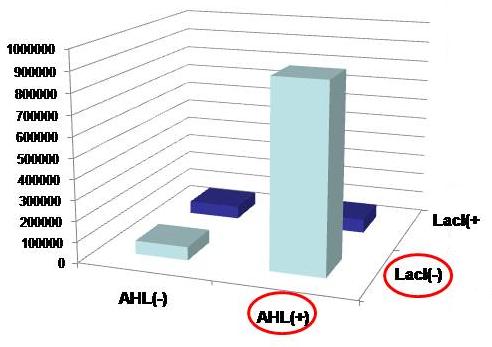Tokyo/Works
From 2007.igem.org
(→1.<span style="color:#0066ff;">Dry </span>: Formulation) |
(→2.<span style="color:#ff33cc;">Wet </span>: Assay1 using "Externally added" materials) |
||
| Line 33: | Line 33: | ||
==2.<span style="color:#ff33cc;">Wet </span>: [[Tokyo/Works/Assay |Assay1 using "Externally added" materials]]== | ==2.<span style="color:#ff33cc;">Wet </span>: [[Tokyo/Works/Assay |Assay1 using "Externally added" materials]]== | ||
| - | + | <!--1で建てた式に必要なパラメータを実験から求めた。この値を使い解析を進める。--> | |
| - | < | + | We have decided the parameter of Hill coefficients by the assay of AHL & IPTG. |
<!--新しいパーツであるハイブリッドプロモータに関して、大腸菌を用いた実験から、2つの入力それぞれに対するHill係数を求めた。 | <!--新しいパーツであるハイブリッドプロモータに関して、大腸菌を用いた実験から、2つの入力それぞれに対するHill係数を求めた。 | ||
<br>図大腸菌の絵、FLAの絵、フィッティングのグラフ | <br>図大腸菌の絵、FLAの絵、フィッティングのグラフ | ||
Revision as of 08:31, 24 October 2007
Abstract Concept & Model Requirements Genetic_circuit Works About_our_team
0. Hybrid promoter 1. Formulation 2. Assay1 3. Simulation 4. Assay2 5. Future works
以下Worksのアブストとなる文章に。上下との話のつながりも明記。
How to reach our goal?
We have alternated/combined Wet and Dry experiments to achieve our goal
Our purpose is the construction and development of genetic circuit to establish "coexistence stability" model. We have alternately employed Dry and Wet approaches. We have drew a navigational chart on our project, which has been confirmed and reinforced by the data from Wet approaches.
0. Wet : Hybrid promoter
First, the newly deviced promoter sensed the Two inputs is necessary for the Genetic_circuit.
We have created a new hybrid promoter and did its functional check.
This newly devised hybrid promoter regulated by two inputs is essential to the genetic circuit in our project.
Since there are no parts available that meet required conditions - activated by AHL and repressed by LacI - among previous publishments as well as BioBrick parts, We started with the design of its sequence.

1.Dry : Formulation
From simple equations, the equations necessary for our model have been deviated step by step. In the final step a stochastic differential equation is used.
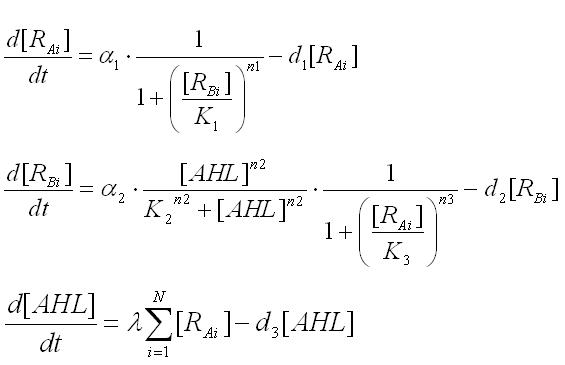
2.Wet : Assay1 using "Externally added" materials
We have decided the parameter of Hill coefficients by the assay of AHL & IPTG.
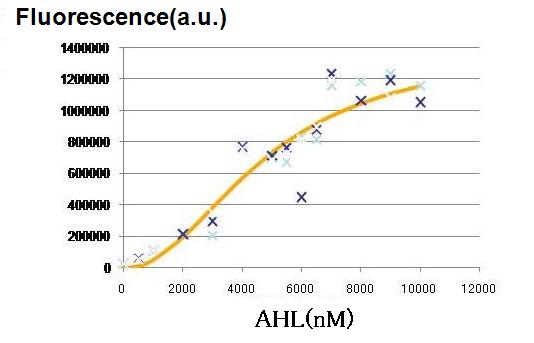
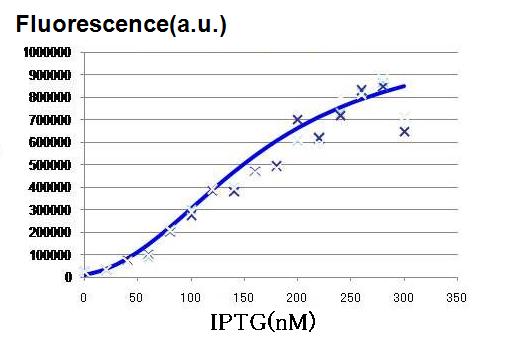
3.Dry : Simulation
Based on stochastic simulation using parameters obtained from our wet experiments, we have confirmed that the whole system becomes unstable when there are only idlers left, and then, they become either of workers and idlers. Also we have determined other parameters necessary for the desired behavior of this system.
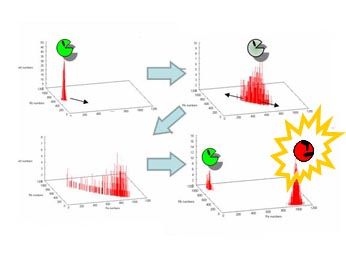
4.Wet : Assay2 using "Cell-produced" AHL
3でもとまったパラメータが、Wet実験で実現可能かを確認した。
具体的には
1.AHLの産出量
2.プロモータの強度比較
を行った。
今後、ここから示唆されることを行うこととする。
By the wet experiments using E. coli, we testified whether our current plasmids can satisfy the other required conditions (for the desired behavior of the system) estimated by the simulation.
5.Future works
以上の実験を通して、いままでつくってきたパーツの一部を違うパーツと交換すれば実現できることがわかった。 このように、ある遺伝子回路をシミュレーションを行いながらつくっていくと交換というこ必要性が増してくると思われる。そこで、我々は交換のために有用な手段を提案する。(⇒アダプター)
Based on the results from the wet experiments in the step 4, the next dry approach - analysis and simulation - should be performed, which will in turn be testified and confirmed by wet experiments.
Continueing these processes, if time permits, would further sophisticate our model.
